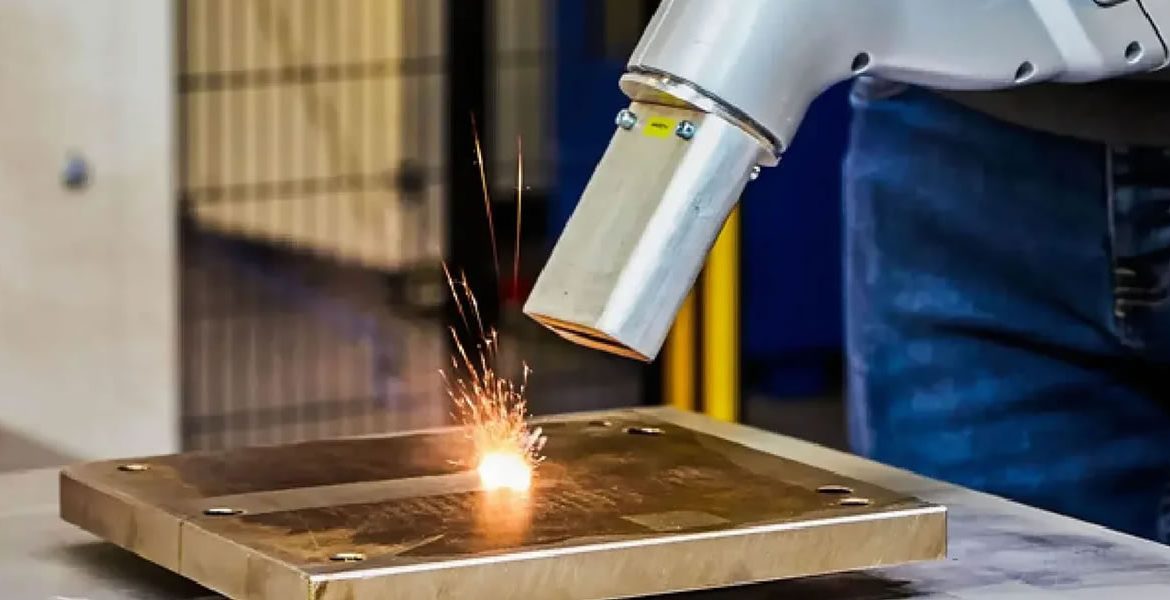In metal part cleaning, oil stains, rust, paint, or coatings often prove difficult to remove. Over time, these residues can significantly shorten the lifespan of equipment and machinery. This is where laser cleaning machines become an ideal solution.
Laser cleaning is a process of ablation, where high-energy laser is focused on the material surface, and the energy released in a short time evaporates and removes contaminants like oil stains, rust, paint, and other residues.
One: Types of Laser Cleaning Machines
1. Laser Cleaning Machine Systems
- Laser cleaning machines come in two main types: handheld and cabinet-based.
- Handheld Laser Cleaning Machines: These devices are portable and perfect for cleaning complex geometries of different parts and projects. They can easily reach areas that are difficult to access with conventional cleaning methods, making them ideal for various work areas.
- Cabinet-based Laser Cleaning Machines: For operations that require frequent, repetitive cleaning, cabinet systems are a better choice. Fixed systems provide stability during the cleaning process and achieve highly efficient and accurate results. You simply place the material to be cleaned inside the cabinet and operate the laser cleaning equipment remotely, thus protecting the operators from the cleaning process.
2. Power Levels of Laser Cleaning Machines
- Low Power Machines (20W – 100W): These systems are lightweight and portable, suitable for removing light rust and small batch cleaning. They are also cost-effective, making them a great choice for maintaining low costs.
- Mid-Power Machines (200W – 300W): Mid-power laser cleaning machines can effectively remove medium-level rust and oil. However, it’s important to note that due to the high laser power and the heat generated, you need to consult suppliers/manufacturers about the cooling mechanisms for the cleaning operations. An inadequate cooling system can damage your machine and the materials.
- High-Power Machines (500W – 3000W): High-power laser cleaning machines are ideal for handling large and heavy metal parts, efficiently cleaning large batches of metal surfaces in a short time. They are suitable for almost all types of metal alloys and their weld preparation, quickly removing surface rust, oxides, and contaminants from materials.
Two: Cost of Laser Cleaning Machines
When considering laser cleaning machines, the cost is a significant factor. Prices vary based on the size, power, and technical specifications of the laser cleaning machine. The choice largely depends on your operational needs. For example, if you only need to remove light rust, a low-power laser cleaning machine will suffice. If used improperly, it could cause unnecessary damage to the workpieces. Although laser cleaning machines may seem expensive, their operating costs are relatively low, and they require minimal maintenance. You can recoup the cost within the first year of use.
Three: Materials Suitable for Laser Cleaning
- Metals: Most industrial metals and manufacturing processes require frequent dust and oxygen removal. Laser cleaning techniques are suitable for almost all types of metal alloys, such as steel, aluminum, and copper. The cleaning process can gently remove surface rust, paint, corrosion coatings, and oxides without damaging the base material.
- Non-Metals: In addition to metals, laser cleaning techniques are also effective for non-metallic materials. Common applications include cleaning ceramic molds, printing rollers, and historical artifacts. The process is safe for the base ceramic and produces minimal waste.
It’s important to note that laser cleaning is not suitable for all materials, particularly plastics. Different types of plastics have different activation potentials. Therefore, it’s crucial to choose a laser cleaning system with appropriate power levels, settings, optical components, and delivery systems.

